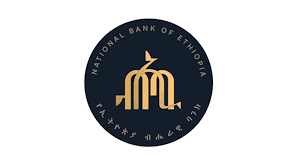Regulating Related Party Transactions: NBE’s Latest Directive Explained
NBE’s new directive introduces stricter monitoring and reporting of related party transactions to enhance transparency and protect financial stability
10/13/20243 min read
Transparency and fairness are cornerstones of a robust financial system. In a significant move to enhance these principles, and immediately before the FY23/24 financial year-end, the National Bank of Ethiopia (NBE) has issued a new directive aimed at regulating related party transactions within the banking sector. This directive mandates banks to monitor, report, and set limits on such transactions. This move is seen as a commendable effort by the central bank to regulate the financial sector in the country, ensuring greater accountability and alignment with international standards. In this article, we explore the details of the directive and its implications for the industry.
Legacy Reporting and Its Shortcomings
Previously, local banks’ annual audited financial statements disclosed related party transactions primarily involving loans, deposits, and remunerations for board members and executive management. These disclosures did not meet requirements of international accounting and auditing standards and lacked information on transactions with majority shareholders, their close relatives, and entities they significantly influence. The absence of a clear and objective definition of related parties and the nature of transactions may have contributed to the below standard reporting in annual reports.
Regulatory Interference
The directive from NBE is seen as a positive intervention by the central bank to regulate and protect the sector from excessive exposure to related entities and terms that deviate from the general market. Additionally, the directive aligns the identification and reporting of related parties and their transactions with global good governance practices, preparing the local banking sector for the soon-to-be-launched capital market.
What’s New
The directive clarifies the definition of a related party, the nature of reportable transactions, the procedures banks must follow, and the role of external auditors. Key points of the directive include:
Related Party
In addition to the usual definition adopted by local banks and their auditors, in line with global best practices NBE’s directive introduces and provides clear definition of ‘influential shareholders’ (those holding 2% or more of a bank’s capital), their first-degree blood relatives, and entities they have significant influence over.
Related Party Transactions
Beyond loans and advances, related party transactions now include off-balance sheet credit exposures, contracts for goods and services, asset purchases or sales, and rental agreements.
Responsibilities of Banks
Banks are now responsible for identifying and reporting related party transactions. They must implement effective IT systems to capture these transactions and monitor exposure through independent credit reviews or audits.
Role of External Auditors
External auditors must review the procedures banks have in place to identify, and report related party transactions. They must also ensure that financial statements are free from material misstatements related to these transactions.
Caps on Related Party Transactions and Prohibiting Preferential Terms
In a significant effort to protect local banks exposure to related party transactions, the directive sets limits on the aggregate exposure to related parties: 15% for a single related party and 35% for all related parties combined. Banks are also prohibited from offering preferential terms to related parties compared to unrelated ones.
Other Points Covered by The Directive
Any transactions with a related party exceeding 15 million Birr must now be referred to their board for approval. Board members with conflicts of interest are not allowed to participate in this approval process.
Challenges Ahead
While the directive is timely and welcomed, it poses significant challenges for banks in identifying related parties and transactions with them. Although the directive provides clear guidance, some banks may find it difficult to trace ‘first degree’ relatives of influential shareholders and the transactions involving them. Initially, banks may rely on disclosures from shareholders, directors, and executive management to identify related parties, but they will need to implement robust systems to capture this data.
Conclusion
Overall, NBE’s directive on related party transactions marks a significant advancement in strengthening oversight and risk management within Ethiopia’s banking sector. By imposing new responsibilities on local banks, the directive not only ensures greater transparency and accountability but also aligns local practices with international standards. This presents a unique opportunity for banks to enhance their systems and fulfil their duty of care to shareholders and depositors.
As we look forward, the upcoming annual reports and audited financial statements will be closely scrutinised to assess compliance with NBE’s directive. This period of transition will be critical in shaping the future of Ethiopia’s financial landscape. Stakeholders are encouraged to stay informed and engaged with these regulatory changes to better navigate the evolving financial environment


© 2024. All rights reserved.
